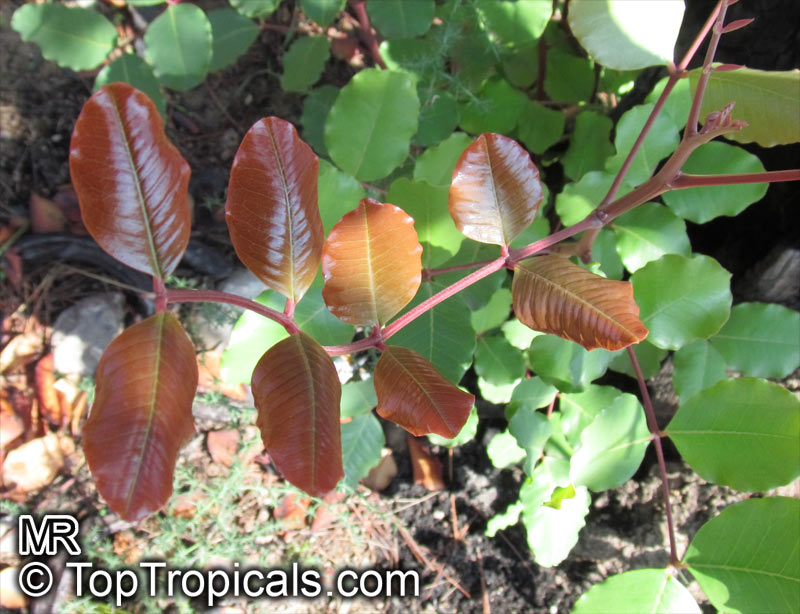Ceratonia siliqua (Carob)
Top Tropicals Plant Encyclopedia
Botanical name: Ceratonia siliqua
Common names: Carob, Algarroba, St. John's Bread, Locust Bean, Chocolate Tree
Family: Fabaceae
Subfamily: Caesalpinioideae
Origin: Mediterranean





The Carob Tree (Ceratonia siliqua) is a small tree that grows between 10 to 20 feet tall and thrives in full sun, with moderate water and in USDA Zone 9-11. The mature plant is cold hardy, able to withstand temperatures at least as low as the 30s F for a short time. It is native to the Mediterranean region including Southern Europe, Northern Africa, the larger Mediterranean islands; to the Levant and Middle-East of Western Asia into Iran.
The Carob Tree has flowers without corolla and of three different types: male, female and hermaphrodite. The fruit is a pod up to 9 inches long, dark brown in full maturity. The seeds are embedded in the thick fleshy sugar-rich pods.
Fruits grow from the axils of the leaves and can produce up to 200 fruits in a single season. These fruits are edible and very healthy, containing high amounts of carbohydrates, proteins, pectin, and tannins. They are commonly used as a natural sweetener, a snack food, and a flavoring in desserts, candies, and sauces.
The Carob Tree is widely cultivated for its edible pods, and as an ornamental tree in gardens. The ripe, dried pod is often ground to carob powder which is used as a substitute for cocoa powder. Pods, rich in sugar when ripe, are used for the production of alcohol or ground with the seeds to make carob bean meal for animal feed. The seeds are extremely hard; unless ground before feeding they are not digestible.
Interestingly, the seeds of the Carob Tree are used as weights in eastern Mediterranean countries, and the word "carat" comes from the Arabic name of the seeds. A carat is a modern unit of weight for gemstones like diamonds, defined as exactly 0.20 grams, which is the weight of a typical carob seed.
Carob is cultivated for its abundance of pods, rich in sugar when ripe, which are used for the production of alcohol or ground with the seeds to make carob bean meal for animal feed.
Recommended Fertilizer: SUNSHINE Robusta - Rapid Growth Booster




















 SUNSHINE C-Cibus (NPK 2-2-4) - Crop Booster for every watering.
SUNSHINE C-Cibus (NPK 2-2-4) - Crop Booster for every watering.  SUNSHINE C-Cibus (NPK 2-2-4) - Crop Booster for every watering.
SUNSHINE C-Cibus (NPK 2-2-4) - Crop Booster for every watering.